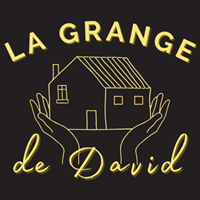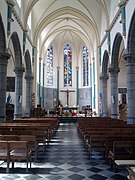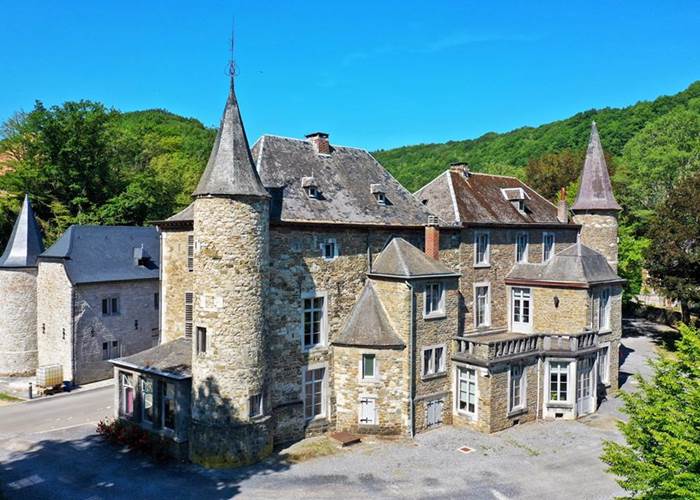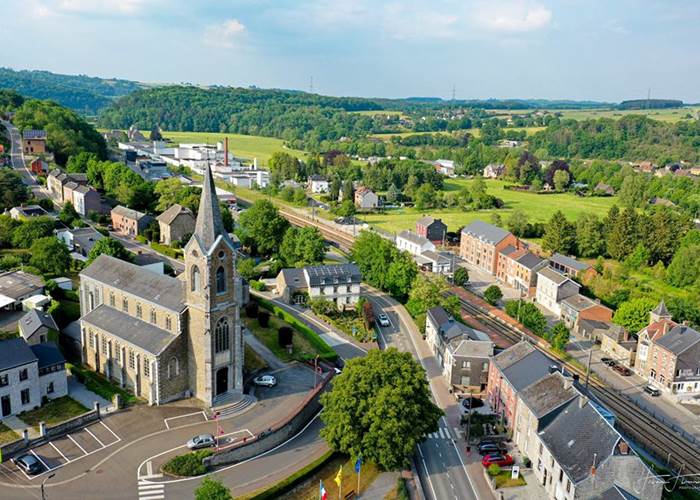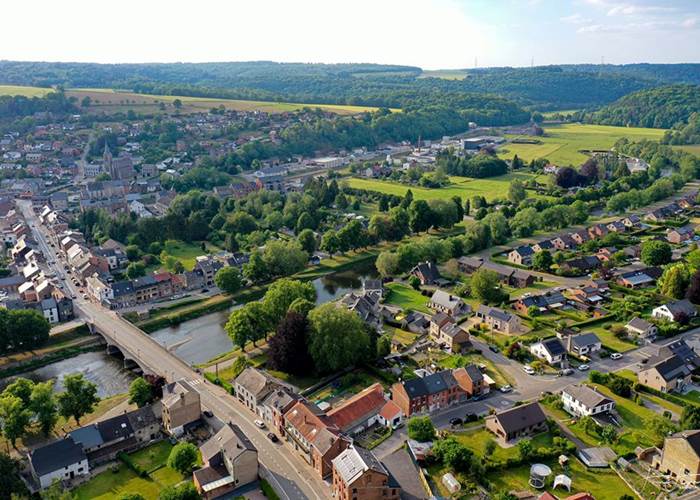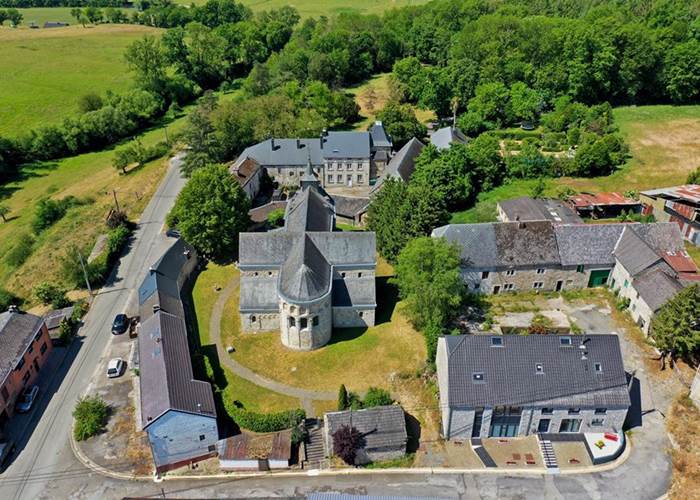Hamoir & the parish of Xhignesse...Their stories

Who better than Wikipedia to tell you the story of and about
HAMOIR
Hamoir is essentially a rural commune. The Ourthe valley, which crosses the commune from south to north, contributes to its tourist development, mainly in Hamoir and Comblain-la-Tour ( SNCB train stations, campsites, hotels, restaurants). The Ourthe successively receives the Néblon in Hamoir, the Bloquay in Fairon and the Boé in Comblain-la-Tour. Hamoir also has a dairy processing plant and numerous shops (mainly in Rue du Pont). The commune is crossed by the National Route 66, which serves as a landmark. In Huy, we speak of the "Hamoir road".
The commune is part of four different natural regions: the Ardennes in the woods east of Filot, the Calestienne in Filot, the Famenne in a large part of Hamoir, Fairon and Comblain-la-Tour and the Condroz in Sparmont and Lawé .
The commune is part of the Regional Economic Group of the valleys of the Ourthe, Vesdre and Amblève ( GREOVA ) as well as the tourist office of the Pays d'Ourthe-Amblève .
The commune of Hamoir is made up of three former communes and four villages:
Comblain-Fairon , a commune which consisted of two villages:
Comblain-la-Tour , which had its jazz festival for eight years; the festival was relaunched in 2009 on the occasion of the fiftieth anniversary of the first edition,
Fairon village concentric around its church,
Filot village of the composer Édouard Senny (1923-1980)
It also has a few hamlets: Xhignesse , Tabreux , Lassus , Comblinay ,Lawé ,, Sparmont , Chirmont , Insegotte .
Description of the village
The village of Hamoir is mainly concentrated at the bottom of the Ourthe valley at its confluence with the Néblon as well as on the western side of the hill, at an altitude of around 119 m at the bridge, 12 km upstream from the confluence of the Ourthe and the Amblève , 39 km from Liège and 24 from Huy . Located mainly in Famenne, the former commune of Hamoir grouped together three ""entities"": Xhignesse on the right bank downstream, Hamoir-centre, and Hamoir-Lassus upstream, also on the right bank.

Old houses on the banks of the Ourthe.
The parish: from Xhignesse to Hamoir
The constitution of parishes in the early medieval period is of an importance which goes beyond the religious character on which they depend. Indeed, with the transition from an urban society to a rural society, they structure the rural world and constitute a relay for the diffusion of the faith, of which the parish church constitutes the center of a materialized territory. Evangelized by Saint Remacle , the region of Hamoir keeps a tenacious memory of his passage during the Middle Ages thanks to the pilgrimage of the fountains located in Filot. It is to him that we owe the will to establish the parishes in our regions. Establishments attested by a diploma, in particular, from the king of the Franks Sigebert , a pious man, granting land to Saint Remacle for the establishment of a monastery.
The foundation of the old parish of Xhignesse is also closely linked to the abbey of Stavelot . A popular tradition says that it was Plectrude , wife ofPepin of Herstal, who was at the origin of this foundation at the end of the 7th century, as it was for the neighboring parish of Lierneux . This tradition is attested by a disputed manuscript of a certain Laurenty, prior of the monastery of Malmedy , in a diploma of the 17th century. Other sources indicate that a monastic community, dependent on Stavelot, settled in Xhignesse, and whose remains would be the Romanesque church of the 12th century which served as an abbey and where the abbot of Stavelot Saint Angelin was buried. This thesis is supported by the discovery not far from the center of the village of a primitive church whose only remains are traces on the ground of ancient walls and posts, as well as a series of ancient tombs dating from the 8th-9th centuries, destroyed by the Normans.
The church of Hamoir is in the 19th century Gothic-Mosan style
architect Jean-Lambert Blandot
Nevertheless, Xhignesse as the spiritual capital of a vast territory extending between the parishes of Stavelot, Lierneux, Tohogne and Ocquier , is attested from the end of the 7th century. But from the 12th century, the parish was dismembered by the establishment of new churches in neighboring villages, such as Lognes or Ferrières. Finally, in the 18thcentury, all that remains of the old parish of Xhignesse are the villages of Hamoir and Filot, Xhignesse, Lassus and Sy. But in 1737, the chapel of Notre-Dame de Lorette was built in the center of Hamoir, and although the church of Xhignesse kept the monopoly on masses for major feasts, this did not prevent the church from losing its parish rank in 1803, first to Filot and then to Hamoir in 1842.
From an architectural point of view, the church of Xhignesse belongs to the Mosan style, but the Rhine influence is clearly felt. The building is constructed from limestone rubble and sandstone, materials native to the region. The plan is described as basilical. The nave is composed of a central vessel with three bays and side aisles, as well as a transept, where, under the triumphal arch, hangs a polychrome Christ on the cross dated without certainty to the 17th century, which opens onto the choir. We will specifically note the presence of a presbyterywhich precedes the apse, itself characterized by the presence on the outside of a remarkable ornamentation of seven blind arcades surmounted by nine niches intended to lighten the vault. Some see in "this architectural process the start of an evolution which will lead to the dwarf or Rhenish galleries."
The church of Hamoir was built by the will of Jean Del Cour , whose inheritance was intended for the construction of a chapel, called Notre-Dame de Lorette. It was thanks to the sale of around a hundred paintings by the famous painter and sculptor that the construction of the church, still visible today, began in 1869 on the site of the missing chapel. Dedicated to the Blessed Virgin Mary, the church is said to be "ogival style." Inside, you will find the true portrait of Saint Luke by Jean Del Cour, as well as a tabernacle door sculpted by the same artist.
Jean Del Cour: a figure of Hamoir and the Liège landscape
Copy of the Virgin and Child in front of the church.
The original is located in Vinâve d'Île in Liège .
Jean Del Cour was born in 1631 in Hamoir, died in 1707 in Liège ,rue Sœurs-de-Hasque where his workshop was established, and buried in thenow-vanished church of Saint-Martin-en-Île . Inspired by his carpenter father, he was a much sought-after sculptor, proof that he enjoyed a certain reputation in his time. Many of his works can be found in the churches of Liège and Belgium. Examples include the series of statues in the church of Saint-Jacques in Liège, made of lime wood, a material in which he was a master, and painted to imitate marble, those in the church of the Friars Minor, the chapel of the Blessed Sacrament of the collegiate church of St-Martin , the funerary monument of the 9th bishop of Ghent in the cathedral of Saint-Bavon, or the altar of the abbey church of Herckenrode today in the Church of Our Lady of Hasselt . But his most famous works from the Liège region remain without a doubt The Virgin and Child which sits atop the Vinâve d'Île fountain, the Three Graces at the top of the Perron liégeois Place du Marché and the work which revealed him, the bronze Christ of the Pont des Arches, today preserved in Saint-Paul Cathedral . After his death, his reputation did not diminish, except in the Romantic era, more passionate about the medieval period, and under the pen of a few critics. His greatest admirers will see him meetBernini during a trip to Rome – when he probably only visited his studio or some of his collaborators from whom he drew inspiration – and Vauban who commissioned a statue of Louis XIV from him. Two monuments in his honor are worth mentioning: the one in Place Saint-Paul, erected in 1911, and the one in Place Del Cour in Hamoir in 1927, where a bronze Virgin and Child sits enthroned.
Other personalities linked to Hamoir
the painter Henri Théatre (1913 - 1985) born in Hamoir.
Hamoir Bridge over the Ourthe seen from the mouth of the Néblon
Old houses on Quai du Batty
Interior of the Church of the Blessed Virgin Mary
Path along the banks of the Ourthe in Tabreux
Source: Wikipedia: Hamoir
